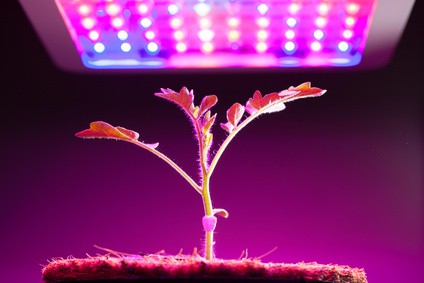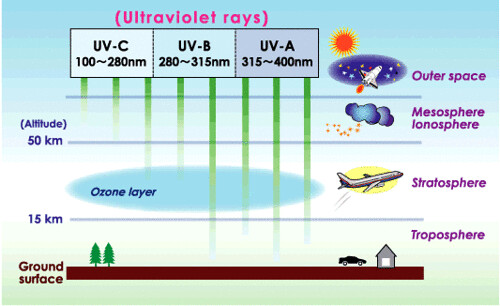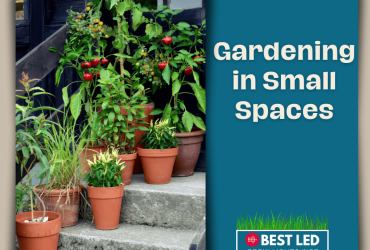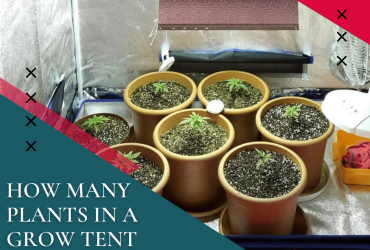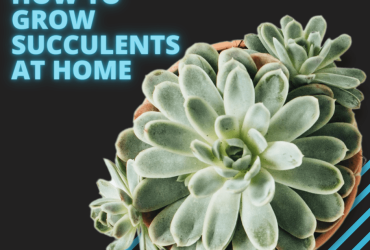The Importance of UV Light for Plants Cultivated Indoors
There’s much debate whether ultraviolet light has any place in indoor plant cultivation. In this article, I address the importance of UV light for plants cultivated indoors and why full-spectrum LED light, including UV, is critical in indoor growing.
What is Ultraviolet Light?
Ultraviolet light often referred to as UV light, is an electromagnetic radiation type obtained from natural sunlight. This light has been deemed helpful to plants in various ways. It is worth noting that the UV light for plant exposure is sub-categorized into three major wavelengths. These include:
UVA (Ultraviolet A)
This wavelength ranges between 320 nm and 400 nm (nanometers are a billionth of a metre). It is made up of around 3% of the photons present in the natural sunlight that penetrates the atmosphere of the earth. Note that UVA is not associated with deleterious effects on DNA.
UVB (Ultraviolet B)
UVB ranges between 290 nm and 320 nm. This comprises of less than a fifth of 1% of overall natural sunlight. UVB light is powerful enough to damage DNA, and it has been associated with cancerous effects in animals. However, owing to its minute composition and the ability of the ozone layer to block this wavelength, it rarely reaches the earth in significant amounts.
UVC (Ultraviolet C)
UVC ranges from 100 nm to 290 nm. This wavelength is almost entirely filtered out by the atmosphere. Therefore, it not considered as a natural light component. It can kill living cells owing to its energy. For this reason, UVC is scientifically employed in sterilization processes.
Research has indicated plants show positive responses to UVA and UVB light exposure. While different plant species show different responses to UV light, studies have further justified that UV light has the effect of enhancing flavonoid/ antioxidant production alongside other natural sunscreen compounds through photomorphogenic processes.
Although UVC is absent on earth owing to it being blocked by the atmosphere, both UVB and UVA are available naturally and make vital life components on earth. However, with the introduction of LED grow light technologies, your plants can access UV light under indoor conditions. LED grow lights generate UV rays artificially. Even under indoor growing conditions, your plants will reap similar benefits to those growing under the exposure of natural sunlight.
Benefits of UV light to plants
1. Activation of the natural defense mechanisms of plants
This can be casually termed as creating a ‘sunscreen’ for plants which is intended to protect the plant from the damaging rays. As held by research, plants have the ability to generate up to fifteen variant defense proteins the moment they are exposed to UV light. An increase of UV triggers a corresponding increase in the defense protein production. Such proteins have been associated with the enhancement of disease resistance, color, and the smell of plants. Plants grown under indoor LED grow light UV exposure achieve these benefits just as those planted under natural sunlight exposure.
2. Enhancement of the germination process and plant quality
UV light wavelengths promote germination of starting seeds when grown under indoor LED grow light exposure. As the gardener transplants a seedling to conditions with higher intensity light sources, UV rays serve to strengthen the plant thereby preparing it for even higher light intensities. It is widely known that a plant may undergo slow growth or shock if it transplanted from low light intensity to high light intensity conditions. For this reason, a seedling exposed to UV light during its early growth stages is better prepared as the exposure helps reduce the shock time while speeding up the process of production.
3. Destruction of harmful microorganisms
UV light whose wavelengths are shorter than 300 nm have extreme effectiveness in the destruction of microorganisms which present harm to plants. Research suggests that UV exposure within the UVC bandwidth is effective for sterilization. This sterilization range is often referred to as the germicidal bandwidth. Since indoor microorganisms are completely carbon- or organic-based compounds, exposure of these microorganisms to UV rays between 240 nm and 280 nm intensities triggers their breakdown. Additionally, exposure of these harmful microorganisms to short-wave UV light has the potential to destroy their DNA to give off organic material present in indoor air components. Note that UV rays need to strike the microorganisms directly and for appropriate exposure time for contaminant penetration and eventual breakdown to their molecular bonds.
It is recommended that UV light is appropriately radiated to plants for maximum results. With effective exposure, your indoor plants can achieve similar benefits as those cultivated under natural sunlight exposure.
Enjoyed this post? Pin it!
